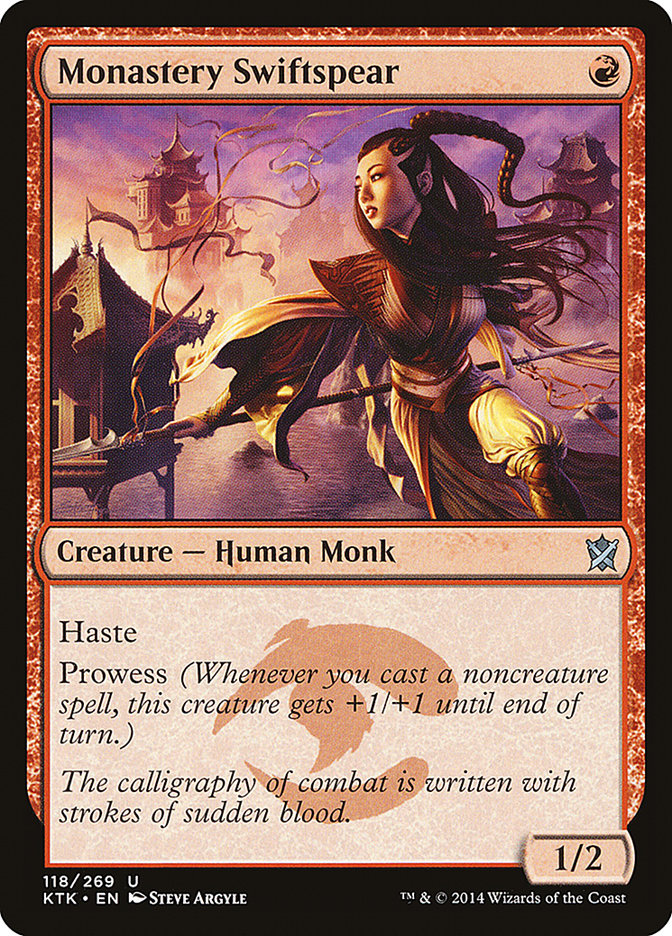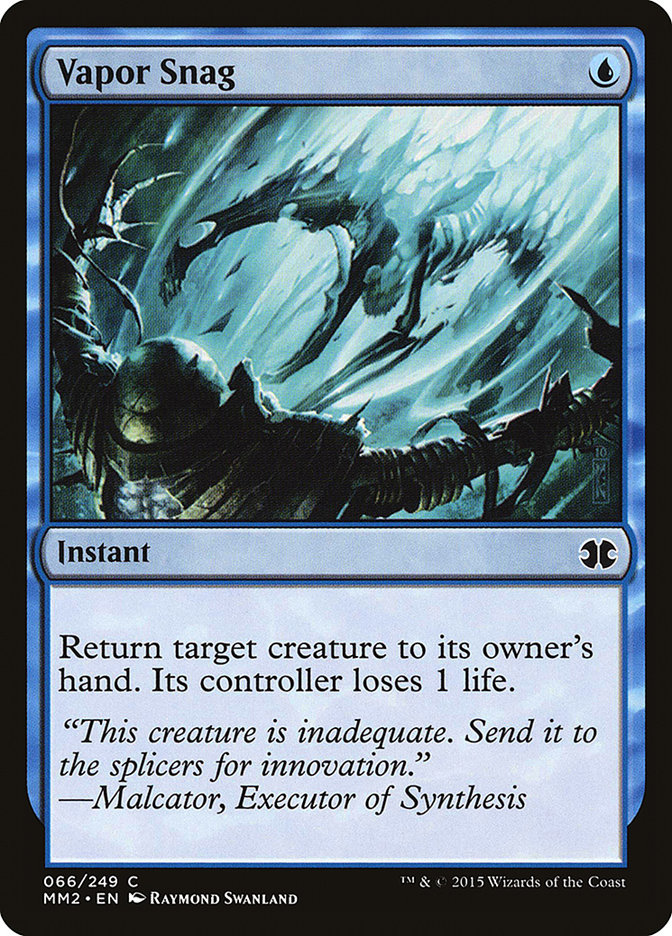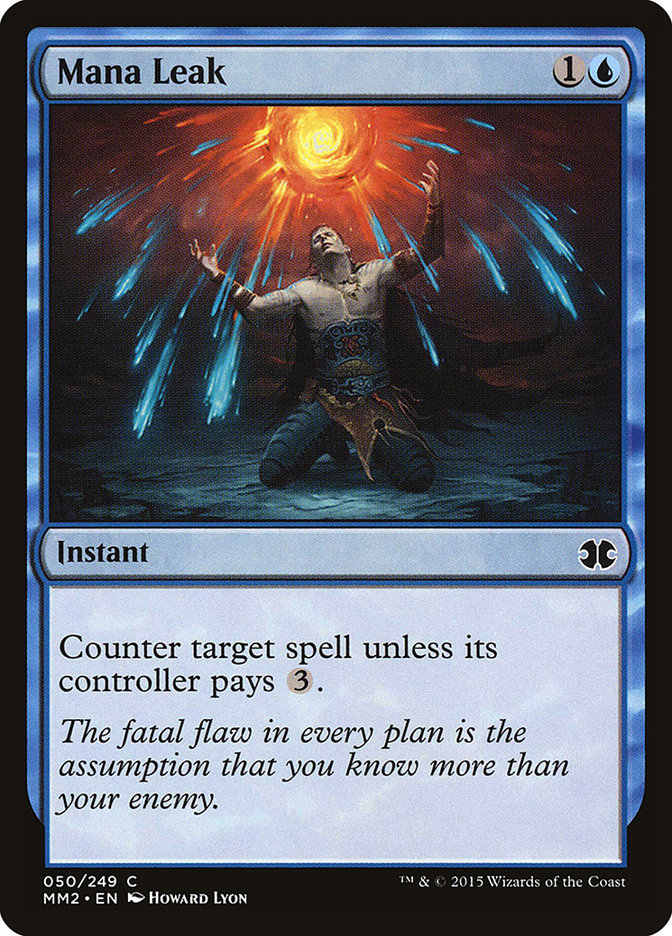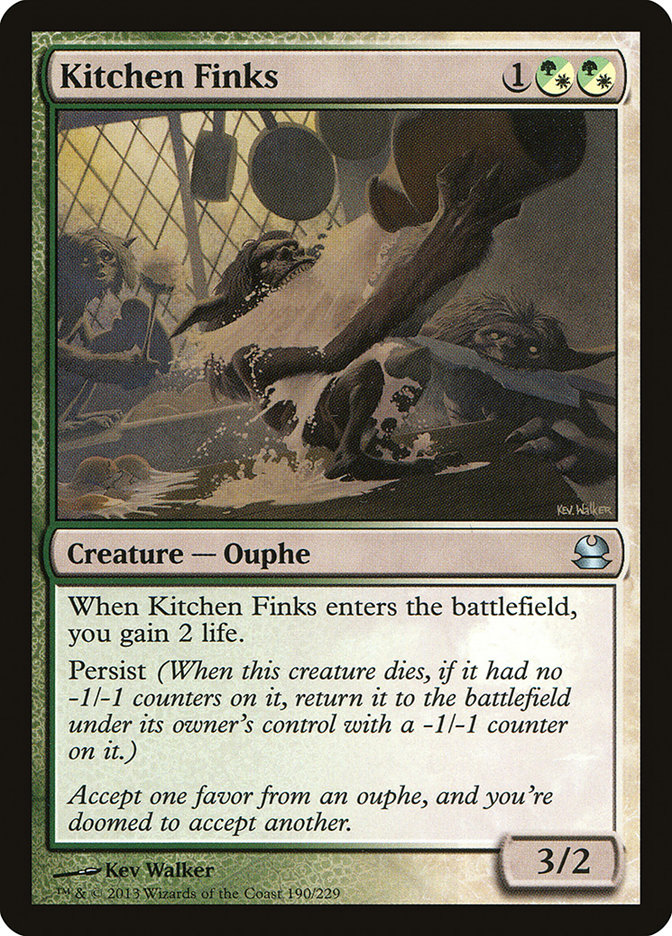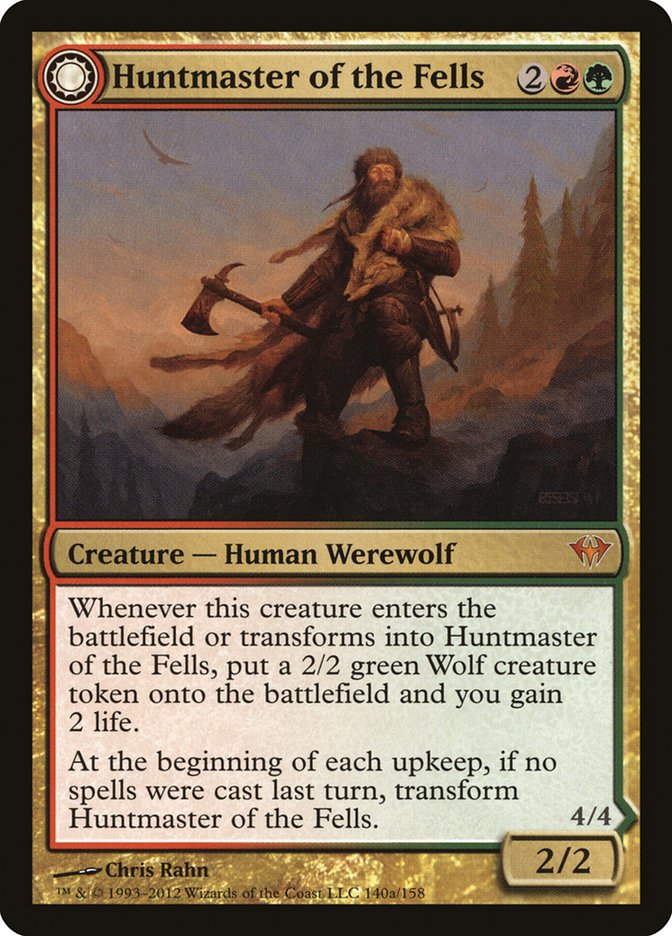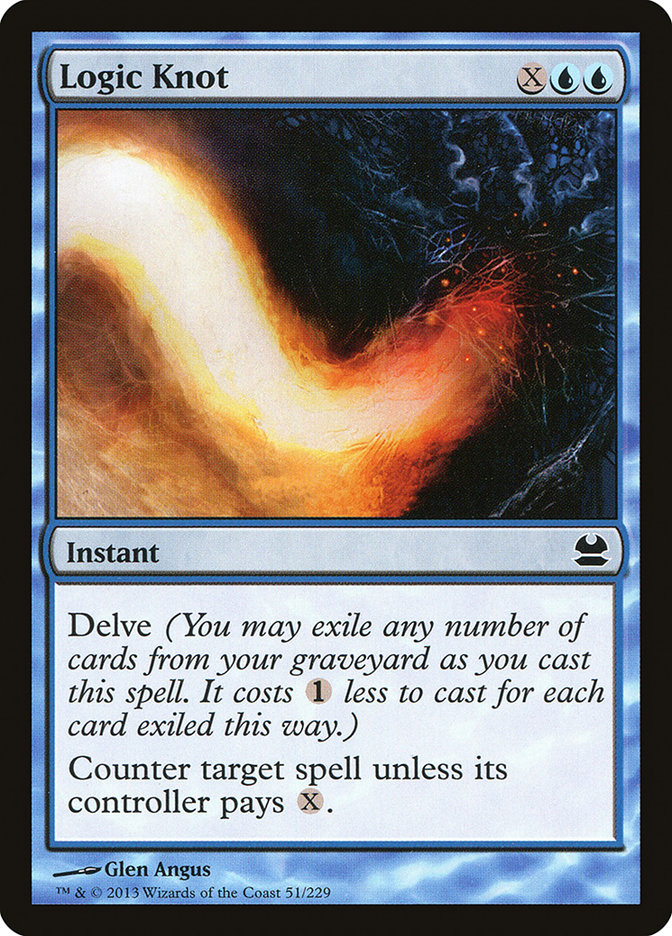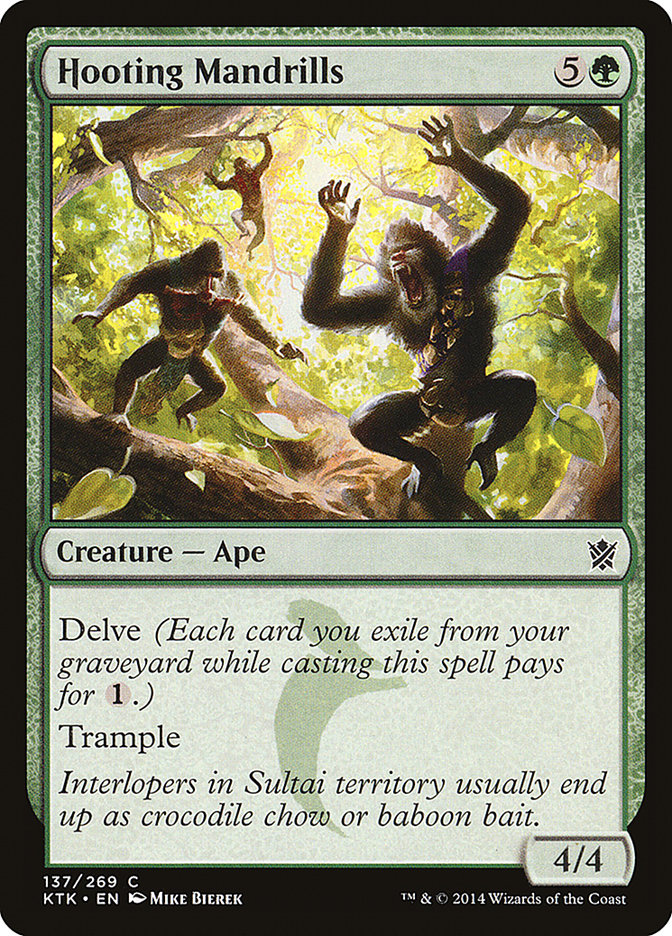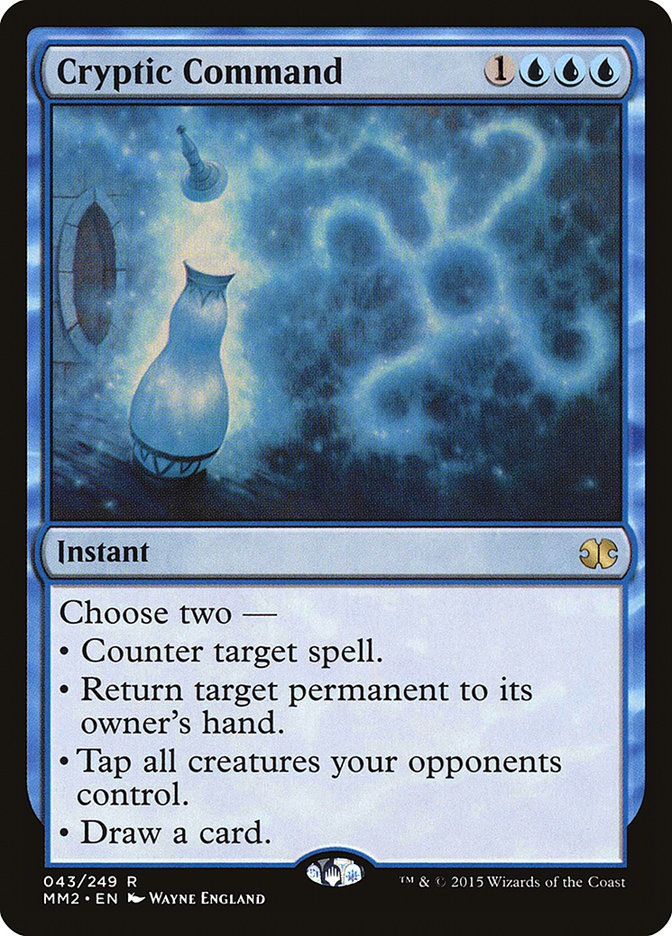We’re coming up on a big weekend in Magic for Modern, and I am quite excited to dip my toes into the pool come Saturday at #GPCharlotte, hosted by StarCityGames.com. As many of you may already know, I like to do my own thing in Modern, regardless of what is traditionally considered good or bad. I know my strengths, and I like to play to them, even if I’m not playing “all the good cards.”
I like to play tempo.
I’ve joked from time to time that, every time I go to an event, I bring my Temur Box. If you know what Patrick Sullivan’s Red Box is, then you can probably guess what the Temur Box is: a collection of almost every Modern card I might want to play in a Temur deck. I might be missing a card or two, just because the Temur Box is relatively new and I didn’t really think much about it when I started to bring it to events. As of now, it’s chock-full of goodies but could still be improved.
The idea behind the Temur Box started with Temur Twin (formerly known as TarmoTwin) and my love for putting my opponent in awkward spots. Are they playing against a combo deck or a tempo deck? Should they sideboard heavily to beat the combo and risk losing to Tarmogoyf and Snapcaster Mage? With a deck as fluid as Temur Twin, you are putting a lot of pressure on your opponent to sideboard and play perfectly because you have many lines of play available, as well as the ability to significantly change your deck after sideboarding.
In some scenarios, you can play the control-combo role, while other matchups force you to take out the combo entirely and go beatdown. Depending on what your opponent is playing, or even how you think they’ll sideboard, you have the option of essentially becoming an entirely different deck.
And while Temur Twin is no longer an option thanks to the banning of my beloved Splinter Twin, the Temur clan still lives on in my heart and in the Temur Box. In that box, my Splinter Twins still lie, waiting patiently for the day when they get to see come back to the format. But for now, we must choose a different path. Today, we’ll go over some different builds of Temur in Modern to give you an idea of how I think about building a deck from the Temur Box.
Bringing the Beatdown
I’m a fan of turning creatures sideways. You might not know that about me, what with the last year being full of Jeskai Black and now Pyromancer’s Goggles in Standard, but deep down, I love me some Tarmogoyf, and I love to pair it with Lightning Bolt. And then I like to pair that with Snapcaster Mage and a few other blue cards. Maybe it’s Vapor Snag, and then again maybe it’s Cryptic Command. Rarely is it both, since one implies a significantly different deck from the other, but I wouldn’t exactly fault you for playing a Cryptic Command or two in virtually any blue deck.
But if your goal is to beat your opponent before they get a chance to get their combo together or assemble some sort of massive brick wall, then this version of Temur Box might be the one for you. It requires a bit more finesse than the others, because you will have to get scrappy at times. All of your cards work together to form Voltron, essentially, and making a small mistake on the first or second turn might end up costing you the game on the seventh.
Creatures (15)
Lands (20)
Spells (25)

Here we have a prime example of what it means to beat down in a Temur deck. In a lot of ways, you could say this deck is a slightly worse version of Zoo, because we’re not exactly dedicated on any front. We have some disruption in the format of counterspells, some removal, and some efficient creatures.
But what we lack in dedication, we more than make up for in difficulty to play against. We aren’t soft to combo decks, thanks to a good clock and some cheap interaction. We also have a lot of game against midrange decks, thanks in large part to the versatility of our “removal” spells. Vapor Snag is actually quite good at protecting our cheap threats from the likes of Abrupt Decay and Terminate, and especially so when the creature we’re protecting is Snapcaster Mage.
This version is a little soft to five-toughness creatures and could easily replace the Flame Slash for something like Roast or even a second Dismember, but I would be hesitant to up the curve a little bit or play even more cards that deal us damage. We’re already pretty soft to Burn decks, but we have a lot of ways to take control of the game if we draw well.
The die roll against either Burn or Zoo is a big deal, but we have a lot of ways to interact with them, and I don’t think it is a fluke that I have a winning record against both archetypes with Temur Delver. They are tough, but beatable. Your biggest enemy, but occasionally your greatest ally, is their Eidolon of the Great Revel. Sometimes it makes your Tarmogoyf just big enough to kill them, and other times you get to stick a Hooting Mandrills without taking damage, only to have them deal four to six damage to themselves.
But the greatest part of Modern is that the format is diverse, and you shouldn’t worry about playing a Burn deck in an open field more than once or twice. If you have to play against them more than that, you can almost guarantee you’ll lose at least once. Their deck is too consistent, and occasionally your draws don’t line up with theirs.
But outside of hyper-aggressive strategies, Temur Delver is one of the best decks in Modern at attacking combo strategies. Combo’s toughest matchups are ones that can put a reasonable clock on them while interacting with their combo pieces. I’m not so sure that the current Modern format is combo-heavy, which might mean that Temur Delver should be kept on the shelf this weekend, but it is a ton of fun regardless. And with a field as big as #GPCharlotte, I would bank on playing against a different deck nearly every round.
Visions of the Future
Another way to go about building a Temur deck in the current format is making it a bit slower but more powerful. With so many linear decks attacking you from so many different angles, it can be a bit difficult to find just the right build, but guessing correctly and building your deck accordingly can lead to great results.
In a lot of ways, you’re always going to look a bit like a tempo deck. That’s kind of the downside (and upside) of playing Temur: we usually need to play creatures to get the job done. At the very least, we keep our opponents honest, and they have to kill us before Tarmogoyf eats them.
But what we also get to do is present them with a cheap win condition while using our permission spells to slow them down. Tarmogoyf makes cards like Remand so much better, because we force their hand. If they’re locked in to interacting with us or under a significant clock, they have to walk right into Remand time and time again. Cheap pressure makes conditional counterspells, or “soft counters,” significantly better.
With Ancestral Vision coming off the banned list recently, I haven’t had a chance to play much with it in Temur, but I’ve seen a few lists I liked and I have some ideas I’ve wanted to try out. If I were to build an Ancestral Vision version of Temur Box, it would probably go something like this.
Creatures (13)
Lands (23)
Spells (24)
- 4 Lightning Bolt
- 4 Serum Visions
- 4 Remand
- 1 Electrolyze
- 2 Spell Snare
- 4 Ancestral Vision
- 1 Logic Knot
- 2 Cryptic Command
- 1 Dismember
- 1 Roast
Sideboard

Of course, there are a lot of similarities here with the Temur Delver deck. We play to our strengths in the Temur clan, after all. The main point of contention here is figuring out how good, or valuable, Ancestral Vision really is in this kind of deck.
We can leverage the card advantage quite well, since our deck is full of cheap, interactive spells. However, we may find ourselves drawing a few too many lands once our Ancestral Vision comes off suspend. That’s one of the downsides to Ancestral Vision: we want to play enough lands so that we can cast our spells once we get a burst of cards, but we don’t want too many lands so that we end up getting flooded. We don’t have Brainstorm or Jace, the Mind Sculptor to turn those raw cards into something we can actually use, but that’s not something we can control without playing some wacky stuff.
I’m still uncertain of Mana Leak versus Remand, but I think that Remand will usually buy us enough time regardless of the situation, and all I really want to do is make sure I have enough time for Ancestral Vision to resolve. Remand is also a bit better in the Ancestral mirrors because it can actually interact with their Ancestral Vision, where Mana Leak will often fall flat.
Remand also allows for some trickery in any sort of counterspell matchup, since you can use your Remands to protect your spells from being targeted by their counterspells, returning them to your hand and drawing a card in the process. It is not a trick too many people know about or use frequently, but it is important to know all the options available to you.
This version can be a bit clunky at times with four total four-drop cards. I’m thinking of moving the Kitchen Finks to the maindeck over Huntmaster of the Fells, but I do like the idea of being able to consistently flip it back and forth. Kitchen Finks is also a little tough to cast on the third turn without altering your mana significantly or dealing yourself a lot of damage (which counteracts the effect).
Logic Knot is a card that hasn’t seen nearly as much play as it should. If you don’t have a ton of cards in your deck with Delve, I think it is one of the best counterspells available in Modern. With Treasure Cruise and Dig Through Time banned and only a handful of other Delve spells seeing play, it only makes sense that Logic Knot is a great option for blue decks looking for one or two counterspells that stop just about anything. Of course, you might be forced to shrink your Tarmogoyf or make your Snapcaster Mage a little bit worse, but that is a price I am willing to pay for an actual Counterspell.
With this sideboard, we also get access to Anger of the Gods, which is huge against one of the format’s better decks: Abzan Company. With so many creatures that need to be exiled instead of just Lightning Bolted, Anger of the Gods can clean up a battlefield that would be otherwise impossible to overcome. Since we aren’t playing Delver of Secrets and our Tarmogoyfs can survive quite easily, Anger of the Gods is a huge boon to this style of deck. Anger can also buy back the time spend to suspend Ancestral Vision or give us enough breathing room for it to resolve.
I wouldn’t mind some sort of hybrid between this version of Temur and the Delver version. I think Hooting Mandrills is criminally underplayed, and it plays well with your counterspells. The downside is that you have to start playing stuff like Thought Scour, which is often quite bad. But I would love to put Hooting Mandrills and Anger of the Gods in the same shell. You want a clock that can survive Anger of the Gods in a lot of matchups, and I could potentially see it taking the slot in this version of the deck that Huntmaster of the Fells currently occupies, but I wanted a big payoff card for playing so many lands.
Something, Something, Aether Vial
Ever since Shouta Yasooka shook up the Modern format a few years ago with his Aether Vial Temur deck, I’ve always wondered why it didn’t pick up more steam. After so many bannings in Modern, I can’t help but wonder if the deck is actually great again, if it wasn’t before. The downside is that relying on Aether Vial to generate a huge advantage can be tough, as failing to draw one in the early turns means your deck won’t function how it is supposed to. But a lot of decks play Aether Vial in Modern, and they still do all right from time to time.
The difference here is that Aether Vial in creature-heavy decks is great, but not always necessary. Usually they are filled with cheap creatures that can be deployed over the first few turns, and Aether Vial helps do that more quickly, and with a bit more finesse. You can’t quite do the same thing for Temur Vial, but you can build your deck much like a control deck, except it goes nuts when you start with an Aether Vial on the first turn.
In order to help out with the draws that don’t feature Aether Vial, we could also try out Ancestral Vision in this strategy, giving us two huge plays on the first turn of the game, building towards winning the late-game. The problem here is that you can get stuck drawing Aether Vial later in the game, which isn’t all that great. For now, let’s just stick with Aether Vial.
Creatures (14)
Lands (22)
Spells (24)

The sideboard here is more of an experiment than anything, seeing how useful a Traverse the Ulvenwald plan could be. The downside is that we are leaving ourselves vulnerable to a number of linear strategies, but many of those can be beaten with the combo of Eternal Witness and Cryptic Command. If you aren’t familiar with this “combo,” you cast Cryptic Command to do an effect, like counter a spell or tap your opponent’s team, with the other mode being “bounce Eternal Witness.” With Aether Vial in play, you can set this up pretty easily, but it is fairly dangerous against a large subset of decks in Modern.
On the other hand, Aether Vial powering out Eternal Witness can be insanely powerful in the right shell. I haven’t played much with this archetype in the two years or so since its inception, but I’d be more than happy giving this deck a go at Grand Prix Charlotte this weekend. While the core of the deck is solid, the spell suite is tough to configure without having a lot of reps with the deck, and without knowing how good the Traverse the Ulvenwald sideboard plan might be, we could end up with a few clunkers that don’t get the job done.
The strength of this deck depends on whether or not the spells you surround the engine with can compete with the other decks in the format and whether or not you can survive long enough to get an Aether Vial online. Luckily, you have Tarmogoyf in your deck, so no matchup is impossible, really.
Well, that’s all I’ve got for now on the Temur Box. Building the best possible deck out of the cards you bring with you is a pretty fun exercise, and I consistently have a blast whenever I decide to pull the trigger. And sometimes, having fun playing Magic is the only thing that breaks you out of a slump.
It can be easy to fall into the “play the best deck every week” camp, and doing so is fine, but you’ll find that you play better and generally do better when you’re playing the kind of decks you love. It just so happens that Temur, in almost any form, gives me the giggles. If Temur isn’t your thing, then go find what makes you happy, and build your own box.




